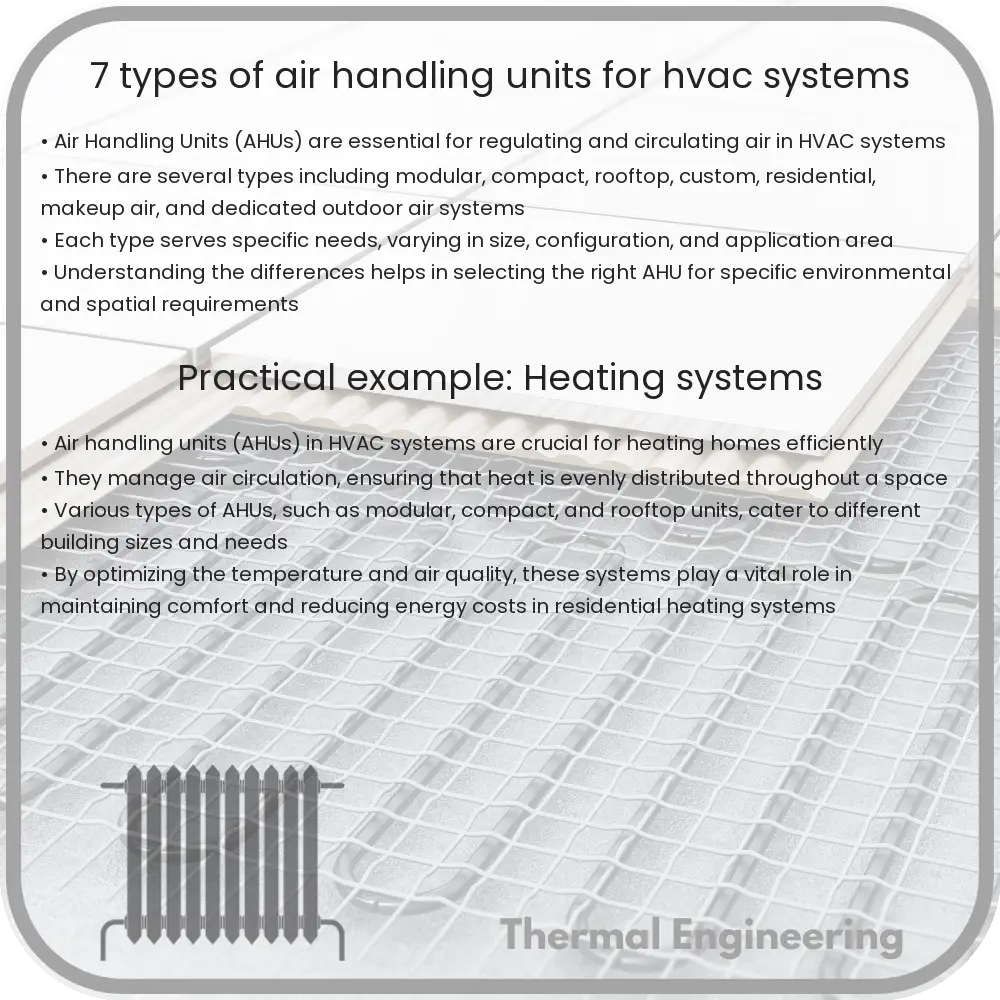Learn about Air Handling Units (AHU), essential components in HVAC systems for regulating and circulating air in buildings.

Introduction to Air Handling Units in HVAC Systems
An Air Handling Unit (AHU) is a crucial component in Heating, Ventilating, and Air Conditioning (HVAC) systems, responsible for circulating and regulating air as part of the building’s heating, cooling, and ventilation systems. These units come in various configurations, each designed to meet specific requirements regarding space, air quality, and efficiency. Below, we explore seven common types of AHUs used in HVAC systems.
1. Modular Air Handling Units
Modular AHUs offer flexibility in design and installation. They consist of pre-engineered modules that can be configured to suit a wide range of applications and building requirements, allowing easy upgrade and maintenance. Components such as fans, heating/cooling coils, filters, and dampers are selected based on the specific needs and assembled to form a complete system.
2. Packaged Air Handling Units
Packaged AHUs are self-contained units that typically include all necessary components within one casing. This design simplifies installation and maintenance, as it is compact and factory assembled. They are ideal for small to medium-sized buildings where space for mechanical rooms is limited, such as in schools or small offices.
3. Custom Air Handling Units
Custom AHUs are tailored to meet the unique needs of a building. They can accommodate specific dimensions, capacities, and configurations that off-the-shelf models cannot. Custom units are particularly beneficial for large, complex installations such as hospitals or industrial plants where specific air quality standards and conditions must be met.
4. Rooftop Air Handling Units
Rooftop AHUs are designed to be installed on the roof of buildings, providing an efficient use of space and directly supplying conditioned air into the building’s ventilation system. They are commonly used in commercial buildings and are exposed to environmental elements, hence built with weather-resistant features.
5. Horizontal Air Handling Units
These AHUs are designed for installation in ceilings, crawl spaces, or attics, where space constriction does not allow for larger units. Horizontal AHUs are particularly useful in residential or light commercial settings. Their layout facilitates easy maintenance and typically operates at lower noise levels, making them suitable for environments where noise could be a concern.
6. Vertical Air Handling Units
Vertical AHUs are designed to stand upright, making them ideal for installations with limited horizontal space. They are often found in mechanical rooms or basements and can serve multiple floors simultaneously. Vertical units efficiently distribute air vertically and are remarkably space-saving compared to horizontal models.
7. Makeup Air Units
Makeup Air Units (MAUs) are a type of AHU that specifically conditions and delivers fresh outdoor air to a space. This helps in maintaining air quality and proper pressurization in the building. MAUs are essential in buildings where internal pollutants and exhaust need to be regularly replaced with fresh air, such as in kitchens and laboratories.
Conclusion
Choosing the correct type of Air Handling Unit is vital for efficiently managing the air quality and climate in any building. Each type of AHU has its unique set of advantages tailored to different building requirements and constraints. When selecting an AHU, factors such as the building’s size, layout, and specific environmental needs must be considered to ensure optimal performance and comfort.